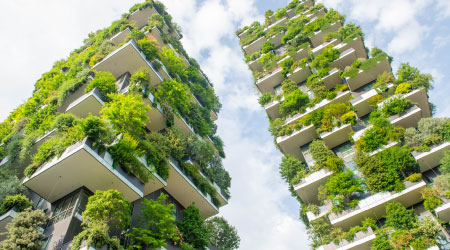Health and Wellness Strategies Complement Resilience, Sustainability
A new report from the Urban Land Institute details how health and wellness strategies are intertwined with and just as beneficial as sustainability and resilience.
In addition to sustainability and resilience, the COVID-19 pandemic showed just how important focusing on health and wellness is (and will be) for facility managers. A new report from the Urban Land Institute titled “Greening Buildings for Healthier People” examines all the ways resilience, health and wellness, and sustainability match up. “More and more, real estate sustainability directors view health and the environment not only as important priorities but also as two sides of the same coin,” says the report.
The report, which is available as a free download, gives step by step advice on the specific strategies facility managers can employ to combine sustainability, resilience, and health and wellness. One of the biggest benefits to doing so is financial, the report says. Showing how strategies can mitigate risk, benefit the bottom line, and improve employee health and morale can massively improve the financial justification case for facility elements that may have a higher first cost than the status quo.
In total, the report should be well-received by facility managers as it shows over and over again how important both buildings, and the people who run them, are to occupant health and wellness, organizational sustainability, and business continuity because of resilience.
"Buildings are powerful. They shape our health, our environmental impact, and our resilience to climate risks. Buildings also play a critical role in addressing climate change and actively preventing the worst of its impacts — not just dealing with its fallout. Failing to invest in climate mitigation, resilience, or health has financial and physical repercussions, but significant opportunities to contribute to a healthier environment and to a healthier population also exist,” the report concludes.
Related Topics:














